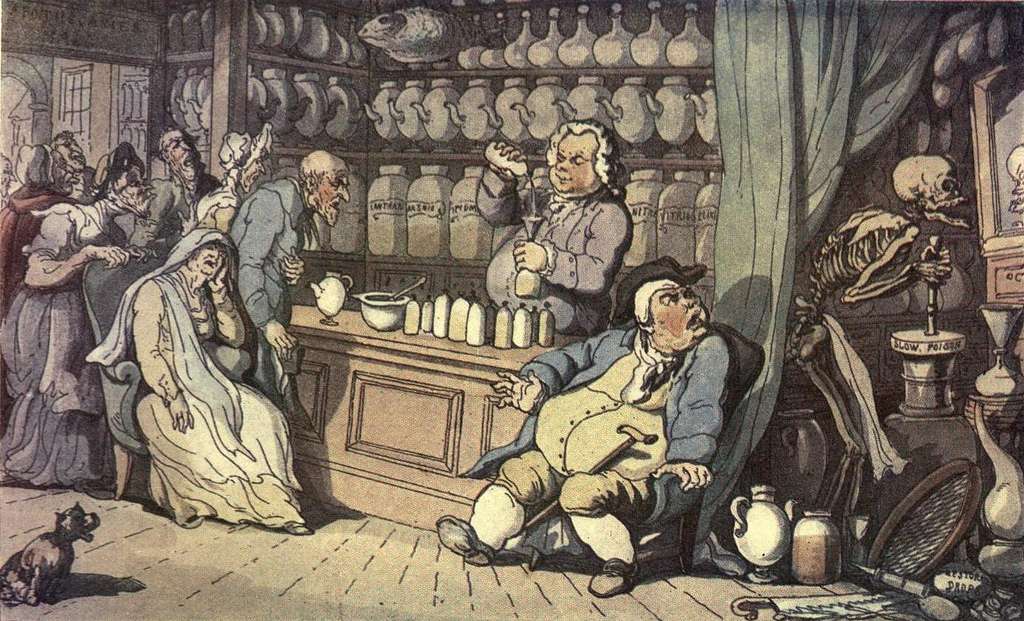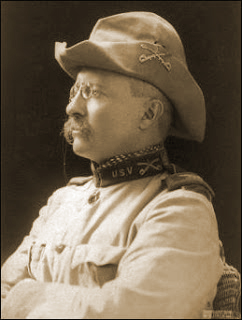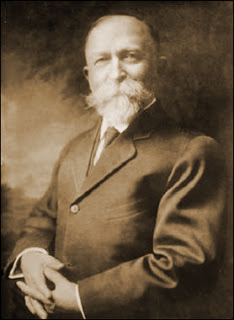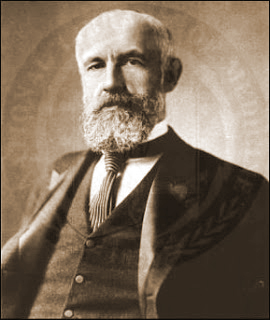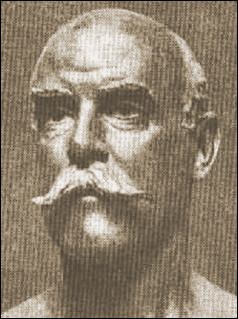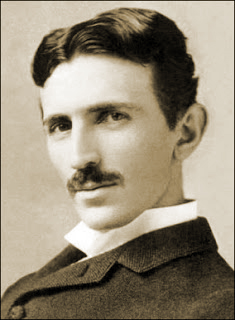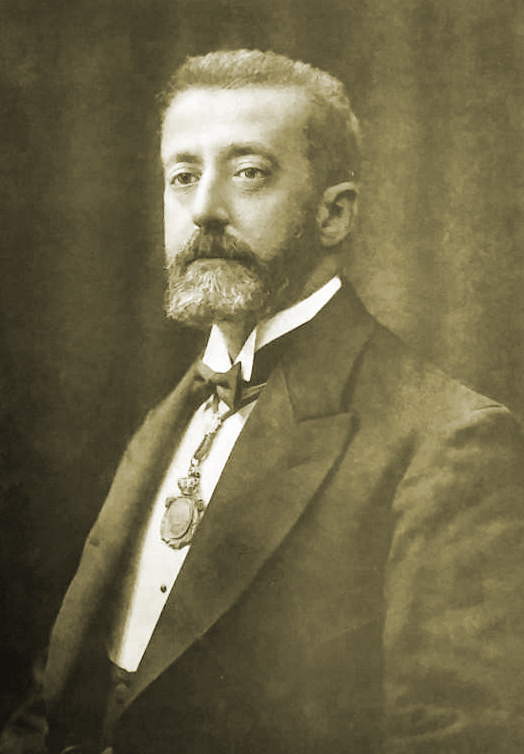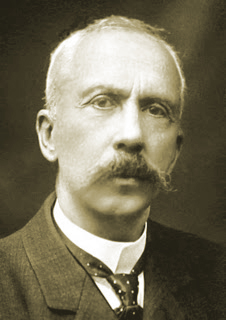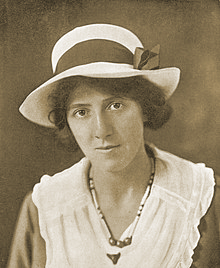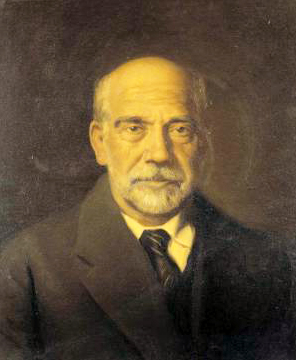A Stone Boat (Faber & Faber 1994)
The Noonday Demon (Scribner 2002)
When we repress our anger, writes Susan Forward in her bestseller Toxic Parents, we will likely fall into depression. But not all cases of depression, the most common form of mental disorder, are the result of repressed anger. It may originate from existential causes: the infinite gamut of insoluble problems in life. However, in cases of repressed parental abuse cathartic anger may be a balsam for its cure. Colin Ross, who coined the term trauma model of mental disorders, believes that ‘anger is the most powerful anti-depressant in the market’. Andrew Solomon takes the opposite stance: he idealised the parent and repressed his anger, as I’ll try to show in this essay-review of his books.
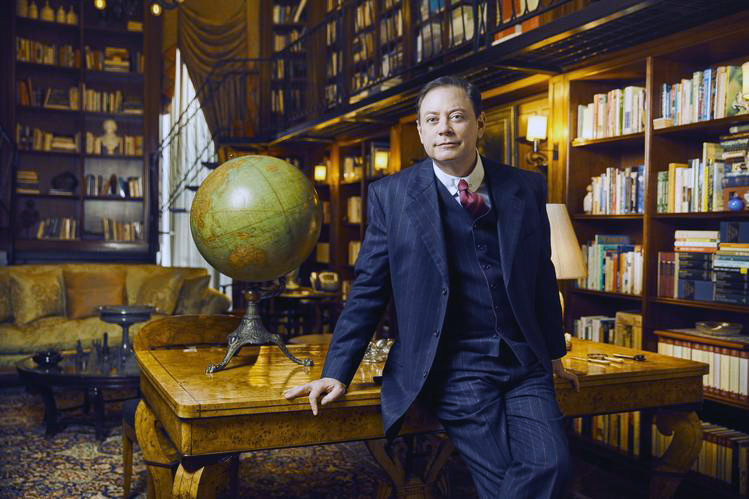
Andrew Solomon✡
Solomon is a very peculiar writer, the son of a millionaire of Forest Laboratories: a company that manufactures psychiatric drugs. That we are immersed in the matrix of Big Pharma is evident in the compliments that The Noonday Demon has received, especially the compliments of those who have suffered from depression. I find this so scandalous that I must write this essay, especially because The Noonday Demon was in the New York Times bestseller list. The pseudoscientific propaganda that inundates The Noonday Demon through its 700 pages (I read the Spanish translation seventeen years ago) is such that I could have written a much longer essay-review.
The Noonday Demon received the National Book Award in 2001. Solomon has thus contributed to what Thomas Szasz calls the pharmacratic status quo. Although Solomon mentions Szasz and Elliot Valenstein, he omits to say that they and many other mental health professionals disagree with the biological theories that Solomon presents as fact. It is not even apparent that Solomon has read the dissident scholars. For example, in the 860 references that he boasts in The Noonday Demon he does not mention a single reference of my critical bibliography on psychiatry that I recommend (see below).
An American pandemic?
According to Solomon’s bestseller, almost twenty millions Americans suffer from depression. Solomon confesses in his book how he suffered from this malaise since his mother died, and he recounts the therapeutic odyssey he found in a psychiatric profession that he considers benign.
The ‘noonday demons’ was a religious metaphor used since the Low Middle Ages to describe what since the Renaissance would be called ‘melancholy’, and in our times ‘depression’. Through the centuries, those who have been in panic when these demons attack have been prone to experiment with all sorts of quack remedies. Solomon himself tried a magical ritual in Africa; standard psychiatric medication, and New Age alternative remedies. He even experimented with alcohol, cocaine and opium, as he confesses in his book.
Tom Szasz, perhaps the most famous psychiatrist in the United States, proposes to abolish involuntary psychiatry. Szasz doesn’t propose to ban the prescription of drugs for adults, always provided that the professional maintains well informed his client about the risks (something they rarely do). A great deal of the economic power of psychiatry rests on this not so obscure side of the profession, the voluntary side: something that blinds people like Solomon to see that the profession has a darker side.
If an individual wants to take drugs, whether tranquilizers, stimulants, anti-anxiety pills or even illegal drugs, he should be free to do it according to Szasz. Solomon goes beyond this and mentions cases in which people in panic solicited electroshock. Although shock treatment is sometimes voluntary, I don’t believe it should be legal. Solomon himself cites the case of a young woman who told him that after a shock session she forgot everything she had learned in law school. Solomon also cites the grotesque testimony of an individual that requested psychosurgery to eliminate his persistent depression, and the neuropsychiatrists performed it! (a pointless surgery, of course, because the problem was in his mind’s software, not in the brain’s hardware).
Those procedures affected the faculties of these voluntary patients, the remedy resulting worse than the illness, because psychiatry is an iatrogenic profession. If we keep in mind Colin Ross’ words about ‘anger, the best antidepressant in the market’, instead of these harmful treatments I would recommend a depressed patient to write a long letter to the parent who caused the crisis (I myself did it, as we shall see). This is what Sue Forward recommends in Toxic Parents. Alternatively, I would recommend talking with survivors of parental abuse. Forward describes her group therapies for neurotics; Ross describes the same for people in psychotic crises. In the worst of possible cases, say schizophrenia, I would recommend a Soteria-like house, although there are very few of them because the medical profession monopolises treatments.
What neither Solomon nor the orthodox psychiatrists understand is that, by medically treating those who have been abused at home, they promote a status quo that ought to change. Those who want a better society do not propose prohibiting the drugs that are voluntarily consumed. We want to eliminate the conditions that cause mental stress and disorders. However, we do point out that with the medical model of mental disorders we are heading toward the dystopia described by Aldous Huxley. In October of 1949, when Nineteen Eighty Four was published, Huxley wrote to Orwell a letter telling him that the totalitarian state would not control people with a boot on the face as in 1984 but through much more subtle forms of manipulation: the voluntary drugging in the
Brave new world
The efficacy of antidepressants, that started to be manufactured a few years after Huxley sent his letter to Orwell, has been enormously exaggerated by the pharmaceutical companies. Solomon ignores that, just like homeopathic meds, the antidepressant that his father distributes basically functions like a placebo: the power of suggestion and autosuggestion. Studies show that a considerable percentage of the people that are told that a marvellous antidepressant has just been discovered are cured of their depression although they were given sugar pills. This effect is called ‘placebo’ in the medical profession. The companies like the one that made Solomon’s father a rich man also minimise the side-effects of the antidepressants.
In a market society it is very difficult to find the study of an independent researcher about the effects of antidepressants. The few existent studies, say those by Peter Breggin and Joseph Glenmullen, have not been rebutted either by the companies that make the drugs, or by the psychiatrists who prescribe them. Breggin, a graduate Harvard psychiatrist, recommends stopping taking any sort of psychiatric meds. It’s irritating that my dust jacket has Solomon as ‘profoundly human’ when Solomon advises people suffering from depression not to stop taking drugs. He even confesses that he got mad with his aunt’s gerontologist because the good doctor advised her to stop taking Celexa (citalopram): the very drug that Solomon’s dad distributes.
As I said, Solomon writes about psychiatric theories as fact. Curiously, at the same time he recommends alternative treatments. Lots of them! Just as the race of birds in Alice in Wonderland, in Solomon’s book all sorts of therapies, allopathic, homeopathic and alternative, win the first price in the treatment of depression. In Solomon’s wonderland absolutely everything is recommended, from the most diverse forms of popular quackery to lobotomy. Since I only have the Spanish translation of The Noonday Demon I cannot quote Solomon verbatim in English (libraries in Mexico are very poor in their English section). But he certainly says that dozens of treatments, from Saint-John’s-wort to psychosurgery, are reasonably promising. If such quackery apparently gets results, it’s all due to the placebo effect.
Solomon’s book is inundated with incredible treatments, personal testimonies from his depressed acquaintances, and with the theories of biological psychiatry. For example, Solomon writes that some people who abuse stimulants also suffer from depression in the same family. To him, this indicates that there’s a ‘genetic predisposition’ for the consumption of cocaine and other stimulants.
It doesn’t occur to Solomon that there can be no genes responsible for addictions for the simple reason that the genes of our species are older than the making of these chemicals. For instance, a putative gene that moves the alcoholic individual to drink cannot exist because alcohol is chronologically more recent than the genotype of the alcoholic individual, and there have been no substantive changes in our species since the caveman. Similarly, Solomon’s claim that the type of drugs that his dad makes represents real medicine is unsupportable. For example, he recognises that cocaine heals depression, but he disapproves of it because it’s illegal. On the next page Solomon recognises that Xanax pills (alprazolam), a benzodiazepine, caused him unpleasant symptoms. Xanax is the anxiety killer that Solomon used to take: the very drug that made George Bush Sr. vomit in Japan during his presidency. According to Solomon, with this drug he could crash into a heavy sleep plagued with dreams. However, he does recommend it because it’s legal.
Solomon never reveals in his book that Ritalin (methylphenidate) can be moral and illegal in the adult who takes it without prescription, but that it can also be immoral and legal if it is administered to a child to control him at school. Instead, he reasons like the good boy of the establishment: the legality of his dad’s company makes those drugs, by definition, moral; and the illegality of cocaine and ecstasy makes them immoral. Solomon talks about the permanent damage in the brain’s dopaminergic systems caused by cocaine. But he omits to say that Zyprexa (olanzapine), the neuroleptic that the psychiatrist prescribed him, causes exactly the same damage. Similarly, Solomon talks about the withdrawal symptoms that cocaine causes, but he does not dissuade his readers from taking neuroleptics although akathisia is pretty similar to such symptoms. Curiously, Solomon says he would accept taking cocaine or ecstasy to cure his depression, but that the withdrawal symptoms made him have second thoughts. In another part of his book Solomon recognises that while alprazolam killed his anxiety during the depressive attacks, it converted him into an addict. In a magazine article Solomon confessed he used to take about twelve pills per day, but when he’s in another mood he states that the aetiology of his depression is purely existential.
The cocktail of psychiatric drugs that Solomon has taken for years includes Zoloft (sertraline), Xanax (alprazolam), Paxil (paroxetine), Navane (thiothixene), Valium (diazepam), BuSpar (buspirone), Wellbutrin (bupropion) and Zyprexa (olanzapine). Even though this suggests that Solomon believes in the medical model of mental disorders, he often talks of souls in pain. He writes that he ‘discovered something that should be called the soul’. Other times he appears as the spokesman of psychiatric biologicism. His book is a contradictory compendium of both explicit apologetics of biopsychiatry and soft criticism of biopsychiatry; of existential testimonies of depressed people, and the biological myths of the profession. He advertises Prozac (fluoxetine) and on another page he recognises that his mother complained about its side-effects. (If Prozac and the antidepressants work as placebos, the so-called ‘side-effects’ are in fact the primary effects, the only effects of the drug; and the antidepressant effect would be caused by the power of suggestion.) Solomon also presents a mixture of both: existential and biological problems as the cause of melancholy. He sensibly concedes that extreme poverty and homelessness may cause ‘depression’, but he unreasonably recommends treating the homeless with psychiatric drugs. He adds the remarkable statement that more than in any other case, the homeless’ resistance to take drugs is a symptom of a ‘disease’. Solomon quotes the scientists or pseudo-scientists who say that the cause of the addictions is ‘in the brain’, when common sense contradicts this bio-reductionist approach. Asian people for example would disagree that their gambling is in their defective brains. The same could be said of those Westerners who are addicted to shopping in a consumer-oriented society: the problem is in the culture, not in their brains.
In his book Solomon contradicts himself in a thousand ways. As a master of doublethink, he accepts both the medical model of mental disorders, and the trauma model of mental disorders when both are mutually exclusive. In his chapter about suicide he repeats the slogans of the psychiatrist, for example when he says that we got to understand that suicidal ideation is the result of mental illness, and that mental illnesses are treatable. He recommends electroshock. Not even the horrendous case-stories that he mentions awakened Solomon’s compassion. He didn’t condemn the psychiatric institutions that maintain them alive against their will. But when he writes about the suicide of his mother, Solomon turns suddenly into a compassionate son, and suicide is nothing else than an act of a tormented soul. However, Solomon didn’t condemn the nets he saw in Norristown Hospital that maintained alive patients like mosquitoes in cobwebs to prevent that they killed themselves. They were strangers to him and he accepts involuntary therapies applied to them. But double-thinker Solomon confesses that nothing causes him more horror than the thought that he would be prevented from committing suicide.
The ‘unacknowledged revenge’ on mother
Throughout my reading of Solomon’s book the question came to my mind: How is it that someone like me, who writes in a state of virtual poverty in the Third World, never fell in depressions while Solomon, the American junior who spent a fortune in treatments didn’t only suffer from the common blues, but of horrible depressions? Could it be that Solomon has not listened to what Stefan Zweig, the biographer of tormented souls, called the daimon?
Let me explain myself. Solomon writes about some children whose parents took to the psychiatrist’s office for anger therapy. Solomon completely omits to say that this was probably due to child abuse at home. Once the legit anger is crushed in the therapeutic sessions, the shrinks acknowledge that the children fell into a melancholic state (remember Ross’ equation about anger and depression being inversely proportional to each other). Those children are, again, strangers to Solomon and he doesn’t pity them. But in another part of his book Solomon recognises that his depression originated after his mother died. And it was precisely a conflict with his mother, who hated Solomon’s sexuality, what had moved him to write another book: A Stone Boat.
I must confess that what moved me to write this essay-review is my literary project that I have written in Spanish and that I would love to see published in English. Alas, the subject is such a taboo that more than twenty publishing houses in Spain and Mexico have rejected it. There’s an almost symmetrical antithesis between the first of my books, Letter to Mom Medusa and A Stone Boat. Also, there’s an almost symmetrical antithesis between my second book How to Murder Your Child’s Soul and The Noonday Demon.
A Stone Boat is an autobiographical novel in which Solomon eludes discharging the rage he feels toward his mother. In The Noonday Demon Solomon mentions A Stone Boat quite a few times as a description of real events of his life, not as a fictional novel. Unlike The Noonday Demon I do have an English copy of it and can, at last, quote this homosexual writer. Solomon wrote:
I can remember days… that this secret [his sexual preferences] was my unacknowledged revenge on her. I would lie in the silence of my room and imagine the pain I would later cause my mother.
Although on the next page he writes: ‘I wanted somehow to take the unspeakable vengeance’, in the balance A Stone Boat is a politically-correct confessional novel: Solomon is afraid of speaking out the whole truth of his sentiments. The plot starts when the main character, Solomon’s alter ego, arrived in Paris to confront his mother because of her attitude toward his male lover.
I set off to Paris in anger, determined for the first time to act upon anger… I was, at best, trying to see my life as separate from my mother’s.
But he couldn’t. Upon arriving he discovered that his mother had cancer.
Perhaps I was angrier that week than I remember, but I think in fact that when I first saw that my mother might be sick, my anger got put away somewhere, and my mother became as glorious to me as she had been in my childhood.
Hence, writes Solomon, ‘through I had gone to France to sever ties’, the beatific vision continued until she died. In the last chapter of A Stone Boat Solomon confesses:
I forgive my mother as though I were spokesman for the very gates of heaven.
Solomon ignores that unilateral forgiveness is a psychological impossibility. The grace of forgiveness only reaches us when the offender recognises her fault. Neither in real life nor in the novel did his mother repent. And Solomon forfeited to confront her directly (the opposite of what another Jew, Kafka, did in Letter to His Father). Moreover, Solomon recounts that in the funeral he saw his mother ‘like an angel’ and, by seeing her in this way, he delivered himself into the open arms of the goddess of Melancholy.
The literary genre that I would like to inaugurate would not only oppose the biologicism that is breathed throughout The Noonday Demon, but the elegant prose of A Stone Boat: a poetic novel that has been described as a reach toward Proust. Vindictive autobiography doesn’t take care of the literary form at all: it’s a barbarous genre that breaks the millenarian taboo of honouring the parent. Without scruples, repressions and with the real names, vindictive autobiography throws in the parent’s face what s/he did to us. Conversely, The Noonday Demon is a book that approaches depression from every possible viewpoint, an atlas of the world of depression as the subtitle says. But what we need is more profundity, not amplitude. This is true not only of The Noonday Demon, but of many other quack books on the subject. The cause of the mental disorders with no known biological marker is in the psyche’s nucleus, not on a surface that a scholarly ‘atlas’ may explore.
In his autobiographical novel, my antipode Solomon wrote:
It was terrible how much I loved my mother. It was the most terrible thing in the world.
This was reinforced by the family dynamics:
My father expected everyone to understand at once that my mother was more important than everyone else [and Solomon] was as much in the habit of believing it as he was. [To the extent that Solomon] thought that if she died I would also have to die.
Solomon’s girlfriend told him: ‘Enough is enough; if you spend every minute with her, you’ll go crazy’. He further writes that ‘to be in the room’ with his mother ‘was like being splattered with blood’. He loved her despite that ‘in the first weeks of her illness, my mother was to reveal more clearly her terrible brutality: She could be harsh, and she was demanding, and she could be selfish’. The metaphor of a stone boat came from his girlfriend referring to Solomon’s idealisation of a perfect family: a myth that, according to her, would sink in the sea.
But she was wrong. Solomon didn’t sink the stony idea in a sea of truth. He continued to idealise his mom as it is surmised from the fact that, after he published A Stone Boat, Solomon embarked on a huge enterprise: the writing of a treatise to repress the aetiology of his depression even further, The Noonday Demon. In this later work, his magnum opus, Solomon tells us that the old Freudian precept of blaming the mother has been discarded.
Solomon is wrong in all counts. Blaming the mother is neither a Freudian principle (it’s Frieda Fromm-Reichmann’s), nor has it been discarded (cf. the work of Alice Miller), and Solomon himself has to get his ass even with his mother’s if he is to win the battle against depression. That’s Sue Forward’s advice, who recommends the depressed adult to read a vindictive letter to the late parent in front of the grave to achieve inner peace. As a researcher, I have been in anger therapies in the Ross Institute for Psychological Trauma in Dallas. The level of overt fury and hate toward the invoked perpetrators shocked me. The emotions I witnessed there were not creatures of the surface but the demons of the Old World that Solomon and his depressing fans don’t dare to invoke.
The daimon
Those who fall in depression are like extinct volcanoes that have long passed by the tectonic plates’ hot spot beneath them. Solomon has not done a good introspection: he’s an extinct volcano. Only thus can we understand when he writes that one of the most terrible aspects of depression, the anxiety and the panic attacks, is that volition is absent: that those sentiments simply ‘occur’. Obviously Solomon has no idea of the demonic magma that inhabits beneath him and that desperately needs a way out. The bestselling author on depression doesn’t know what depression is: psychic congestion or a cooled crag that, blocking the escape valve, impedes the deliverance of a monster. Had Solomon choose the genre of the eruptive epistle instead of the toned down novel or a scholarly treatise, he could have confronted the inner daimon that haunts him and vomit the hell out of it.
There’s a passage in The Noonday Demon that suggests this interpretation. Solomon writes that he once believed that his sexuality was responsible for the suffering of his mother: suffering she endured until she died. The mother hated Solomon’s homosexuality, and that hatred was a poison that started to impregnate Solomon’s mind. I’m not inventing this: I’m rephrasing what Solomon wrote from the translated copy of his Noonday that I have access to. Solomon even writes that he cannot separate his mother’s homophobia from his own homophobia to the point of exposing himself to the HIV virus. And he further confesses that this exposure was a way of converting an inner self-hatred into a physical reality. In A Stone Boat he writes that his mother told him: ‘No child was ever loved more than you’, and in the following pages he adds: ‘A minute later I thought of killing her’ to end the mother’s agony. Mom’s cruellest tirade had been telling him she would eat poisonous maggots and die, and that only then would Solomon regret having been a naughty child.
Solomon’s confessions can help us to understand his depression in a way that Solomon can’t. As he writes in The Noonday Demon, which unlike A Stone Boat is not a novel, his mother committed suicide to stop the pain of her ovary cancer. On June 19, 1991 in front of Solomon his beloved mother swallowed red pills of Seconal (secobarbital: a barbiturate). He and the rest of his family assisted the suicide. Solomon confesses us that his mother’s suicide was the cataclysm of his life; that it’s buried in his guts like a sharp knife—these are his own metaphors—and that it hurts every time he moves. In some of the most emotional passages Solomon tells us that his mother took pill after pill, the ‘poisonous maggots’ she had threatened would make him feel really bad. Solomon even writes that by imitating her he later learned to take handfuls of anti-depressants, ‘pill after pill’…
The psychic radiography of Solomon starts taking shape. However, like the proverbial prodigal son that represses in his mind the parent’s behaviour, Solomon tells us that it is nonsense that teenagers reproach their parents when they have done everything for them. His non-reproached resentment metamorphosed into acute melancholy: just what happened to the children whose shrinks eliminated their anger. But it is the prohibition of touching the mother what makes this Œdipus write that we should not deceive ourselves; that we don’t know the cause of depression and that we don’t know either how it came about in human evolution.
That, my dear readers, is biological psychiatry: the art of blaming the body for our cowardice to confront mom.
Œdipus’ struggles with the daimon
In his desperate attempts to escape the harassment of his inner daimon, Solomon found the exit door by a fluke. In The Noonday Demon he paraphrases the psychoanalysts who have written insightful passages about melancholy. For example, Solomon writes that, in order not to castigate the beloved person, the melancholic individual re-directs the anger and the ambivalence he feels for the loved one onto the patient himself. And following Sigmund Freud and his disciple Karl Abraham he self-analysed himself well enough when he wrote that during his first crisis, after his mother’s death, he incorporated her into his writing. Unfortunately, he also writes that he lamented the pain he caused to her, and this false sense of guilt persisted. He further writes that her death prevented that his relationship with his mother had a healthy closure. In A Stone Boat he had written: ‘Our flashes of intense hatred had never really undermined our adoration of each other’.
Solomon never crossed through the very door that he opened. In contrast to John Modrow, the valiant memorialist who published a touching autobiography about his maddening parents, Solomon’s struggles with the daimon of honouring the parent never ended. When he published A Stone Boat the daimon of guilt assaulted him once more. In The Noonday Demon he writes that when he published the novel it made him feel like a defiant son, and that the guilt feelings began to consume him. He even writes about an internalised love-object, his mother, and about internalised sadism: what Solomon did to himself. Solomon wasn’t only masochist to defend the idealised image of his mother (cf. what Ross says about ‘the locus of control shift’ in his book The Trauma Model). He broke pictures of himself hanging in his home, and he left the hammer in the middle of the broken crystals.
Once he even attacked viciously a friend to the point of breaking his jaw and nose. The man was hospitalised and in The Noonday Demon, where we wouldn’t expect fiction or literary embellishments as in the novel, Solomon confesses to us that he will never forget the relief he felt with each of his vicious punches. He found himself even strangling his friend and says that could have killed him. However, Solomon omits to say if he was arrested or if dad’s attorneys kept him out of jail. He does confess, however, that he hasn’t repented from what he did. He justifies his actions and he wrote that otherwise he would have become mad. And he adds that part of the sensation of fear and impotence he suffered in those times was alleviated by those savage acts. And still further he adds the illuminating confession that to deny the curative power of violence would be a terrible mistake, and that the night of the fighting he arrived at home covered with blood with a sensation of horror and euphoria at the same time.
Miraculously, that night he felt completely released from his daimon! But was the struggle with it over? Nope!: this acting out was nothing else than the displaced fury he felt toward his mother.
Alice Miller has taught us that displaced rage is infinite. It never ends. One is left to wonder what would the hospitalised friend say of Solomon’s fans, who have described him as ‘compassionate and humane’. On the next page of Solomon’s fight he gives us the key to enter his mind. Solomon wrote that he realised that depression could manifest itself in the form of rage.
This cracks the daimon’s cipher. Those who fall in depression and go to the shrink office to pop up a bottle and take a pill don’t know what’s happening in their heads! What these people actually feel is rage and fury toward the perps. But God forbid: we cannot touch them. Parents are to be honoured. A Miller reader would argue that only when our selves get integrated about how and when we were abused, we won’t displace our rage on innocent friends. Solomon also confesses to us that he displaced the anger he felt on his lover: ‘I hated Bernard and I hated my father. This made it easier to love my mother’. This is exactly what Silvano Arieti said in Interpretation of Schizophrenia about one of his patients who ‘protected the images of his parents but at the expense of having an unbearable self-image’. The dots start to be connected. Solomon imagined that he ‘would mutilate his [Bernard’s] cat’. But that was not enough:
I wrote him a letter carefully designed to make him fall in love with me, hopelessly in love, so that I could reject him brutally. I would castrate him with a straight razor. [And also fantasised] putting rat poison in his coffee, but I couldn’t remember why.
Of course he couldn’t: he was still displacing his anger onto a scapegoat (in The Noonday Demon he ratifies the actual existence of the person he called Bernard). Solomon was looking for a safer object to transfer his unconscious affects toward his mother, a mother about whom he wrote: ‘You don’t love me. You are obsessed with me, and you keep trying to drag me down into your illness’. Since displaced anger is infinite, in The Noonday Demon Solomon confesses that, in desperation, he went to Senegal looking for an exorcism. The persistent daimon had to be expelled at all costs, and he tried the ritual called ndeup. But witchcraft didn’t work. The powerful spell that his witch-mother had cast unto him wasn’t broken in black Africa.
After his Senegal experience Solomon continued to look for the cause of depression in psychiatry’s blame-the-body theories, and he also tried many pop remedies. It’s fascinating to see that quite a few of his quack remedies are identical to what Robert Burton prescribed in his famous 1621 treatise on melancholy. Both writers, the 17th-century Burton and the 21st century Solomon, recommend Saint-John’s-wort! And parallel to these Old Age and New Age quackery, Solomon writes a ‘scientific’ chapter on evolutionary biology to answer how could it be possible that natural selection allowed depression.
If we take into account that depression is a crack in our attachment systems due to unprocessed abuse, the above is a pretty stupid question. While I only have minor quibbles with Solomon’s stupidities, when he mentions involuntary psychiatry he sides the parents and the professionals against the patients. The pages that infuriated me the most are the ones in which Solomon sides the parents who label their sane children as mentally ill to control them through psychiatric drugs, especially at school.
It is understandable, therefore, that Solomon didn’t dedicate The Noonday Demon to the child victim of involuntary psychiatry, what I do with my texts. He dedicated it to his millionaire father who financed his investigation and whose income depends on the selling of those drugs for social control.
Recommended readings:
Criticism of language is the most radical of all criticisms. The following is the first book of my list because, if in our vocabulary we don’t root out the Newspeak of psychiatrists, psychoanalysts and clinical psychologists, it will be impossible to understand the family, social, economic and existential problems that we all have:
(1) Thomas Szasz: Anti-Freud: Karl Kraus’s Criticism of Psychoanalysis and Psychiatry (NY: Syracuse University Press, 1990).
On the importance of vindictive autobiography:
(2) John Modrow: How To Become A Schizophrenic: The Case Against Biological Psychiatry (New York: Writers Club Press, 2003).
(3) Susan Forward: Toxic Parents: Overcoming Their Hurtful Legacy and Reclaiming Your Life (2002 by Bantam, first published in 1989).
On psychoanalysis and all sorts of psychotherapies:
(4) Jeffrey Masson: Against Therapy: Emotional Tyranny and the Myth of Psychological Healing (Common Courage Press, 1988).
(5) —————–: Final analysis: The Making And Unmaking of a Psychoanalyst (London: HarperCollins, 1991).
On the pseudoscientific nature of biological psychiatry:
(6) Colin Ross and Alvin Pam (eds.): Pseudoscience in Biological Psychiatry: Blaming the Body (NY: Wiley & Sons, 1995).
(7) Elliot Valenstein: Blaming the Brain: The Truth About Drugs And Mental Health (NY: The Free Press, 1998).
(8) Peter Breggin: Toxic Psychiatry: Why Therapy, Empathy and Love Must Replace the Drugs, Electroshock, and Biochemical Theories of the “New Psychiatry” (NY: St. Martin’s Press, 1994).
(9) Robert Whitaker: Mad in America: Bad Science, Bad Medicine, and the Enduring Mistreatment of the Mentally Ill (Cambridge: Perseus, 2001).
Note of 2020:
Anyone who wants updated information can watch Robert Whitaker’s YouTube videos, which includes videos from this year (not to be confused with white nationalist Robert W. Whitaker who died in 2017).
My books on the subject appear on the sidebar: Letter to mom Medusa and Day of Wrath.
 For those who haven’t read the essay on the meaning of the ring in both Wagner and Tolkien, it is time to do it…
For those who haven’t read the essay on the meaning of the ring in both Wagner and Tolkien, it is time to do it…

